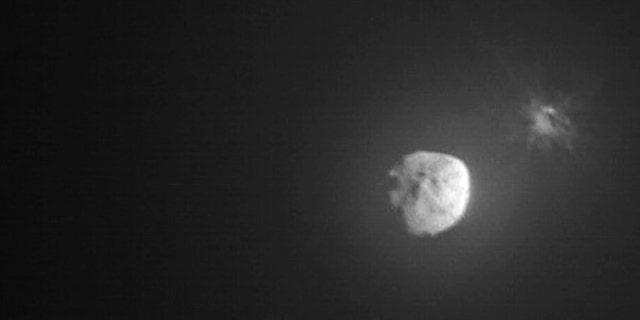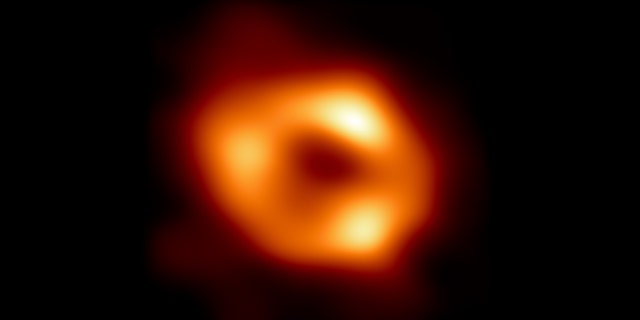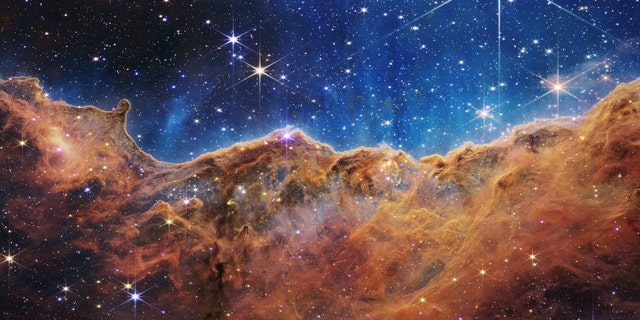From the successful scientific operations of NASA’s James Webb Space Telescope to the splashdown of the Orion space capsule, 2022 has seen a lot of wins.
Here are the biggest moments to remember:
Double Asteroid Redirection Test (DART)
NASA’s Double Asteroid Redirection Test (DART) mission successfully altered the orbit of an asteroid millions of miles away. Following analysis over two weeks after the spacecraft struck Dimorphos – the first time humanity purposefully changed the motion of a celestial object and the first full-scale demonstration of asteroid deflection tech – scientists found that the kinetic impact had shortened the moonlet’s orbit around its parent asteroid Didymos by 32 minutes. Before, Dimorphos took 11 hours and 55 minutes to orbit Didymos. The measure has a margin of uncertainty of approximately plus or minus two minutes.
IMAGE FROM NASA’S WEBB TELESCOPE REVEALS EARLY STELLAR FORMATION IN ‘RARE’ FIND

In this image made available by NASA, debris ejects from the asteroid Dimorphos, right, a few minutes after the intentional collision of NASA’s Double Asteroid Redirection Test (DART) mission on Sept. 26, 2022, captured by the nearby Italian Space Agency’s LICIACube. On Tuesday, Oct. 5, 2022l, NASA said the spacecraft succeeded in shifting its orbit.
((ASI/NASA via AP))
Black hole in the Milky Way
Astronomers unveiled the first image of the supermassive black hole at the center of the Milky Way galaxy. The colorized picture was produced by the international Event Horizon Telescope (EHT) Collaboration, using observations from a worldwide network of radio telescopes. The black hole is about 27,000 light-years away from Earth and 4 million times more massive than our sun.
Perseverance rover collects Martian samples
NASA’s Perseverance rover is expected to begin building the first sample depot on another world. According to NASA, this will mark a crucial milestone in the Mars Sample Return campaign, which aims to bring Mars samples to Earth for closer study. Over the course of around 30 days, Perseverance will deposit a total of 10 tubes that carry samples representing the diversity of the rock record in Jezero Crater.
Orion spacecraft splashes down after lunar flyby

Sagittarius A(asterisk) captured by the Event Horizon Telescope (EHT) Collaboration
(Credit: EHT Collaboration)
STRIKING NASA IMAGES REVEALS IO’S VOLCANO-LACED SURFACE
NASA’s Orion space capsule splashed down in the ocean after a 25-day uncrewed test flight around the moon, concluding a mission that paves the way for astronauts on the next lunar flyby. The capsule splashed down west of Baja California, more than 300 miles south of the original target zone.
James Webb Space Space Telescope begins scientific operations
NASA and its international partners released the full series of James Webb Space Telescope’s first full-color images and data. The pictures include the WASP-96 b exoplanet, which is a hot, gaseous giant located nearly 1,150 light-years from Earth. In another shot shared via an international broadcast, the Southern Ring, or “Eight-Burst,” planetary nebula is shown in greater detail, which was previously hidden from astronomers. Next, in an image presented by European Space Agency (ESA) partners, Stephan’s Quintet – a visual grouping of five galaxies – is seen in a new light, about 290 million light-years away. The final image showed the glittering vista of the Carina Nebula – a stellar nursery – with brand-new stars that were previously completely hidden. The “Cosmic Cliffs” captured by Webb are the edge of the giant, gaseous cavity within the Carina Nebula’s star-forming region called NGC 3324. The Carina Nebula, found within the Milky Way, is approximately 7,600 light-years away. It is home to many massive stars that are several times larger than the sun.
Since then, the telescope has helped astronomers uncover the earliest galaxies confirmed to date.

What looks much like craggy mountains on a moonlit evening is actually the edge of a nearby, young, star-forming region NGC 3324 in the Carina Nebula. Captured in infrared light by the Near-Infrared Camera (NIRCam) on NASA’s James Webb Space Telescope, this image reveals previously obscured areas of star birth.
(IMAGE: NASA, ESA, CSA, STScI)
NASA’s Native American astronaut makes history
NASA astronaut Nicole Mann made history as the first Native American woman to launch into space. Mann, a member of the Wailacki of the Round Valley Indian Tribes, traveled to the International Space Station as commander of NASA’s SpaceX Crew-5 mission aboard the SpaceX Crew Dragon spacecraft.
CLICK HERE TO GET THE FOX NEWS APP
Axiom-1 private spaceflight launches
Axiom Mission 1, the first private crewed mission to the International Space Station (ISS), launched in April. SpaceX’s Falcon 9 rocket and Crew Dragon Endeavour lifted off from NASA’s Kennedy Space Center in Florida. The Ax-1 mission sent four private space travelers on a 10-day flight to conduct science and push the boundaries of commercial spaceflight.
Fox News’ Bradford Betz and The Associated Press contributed to this report.
